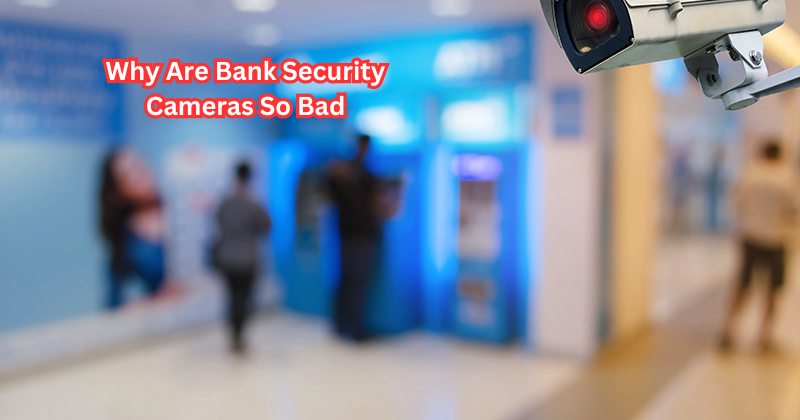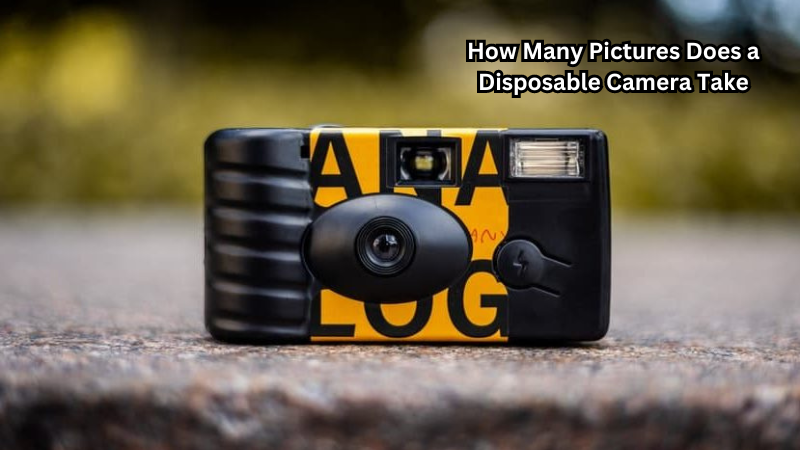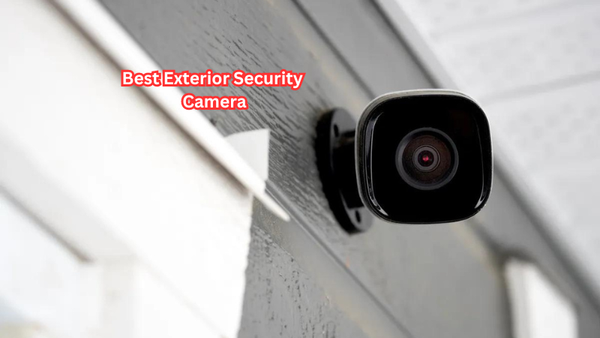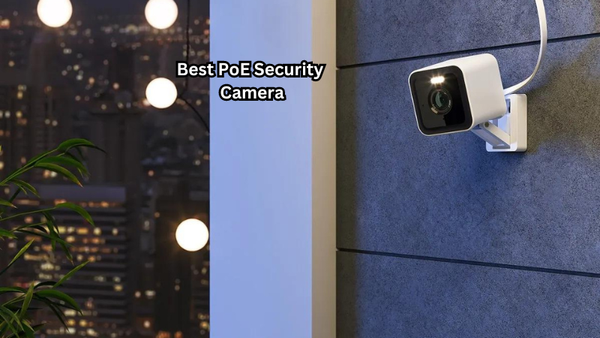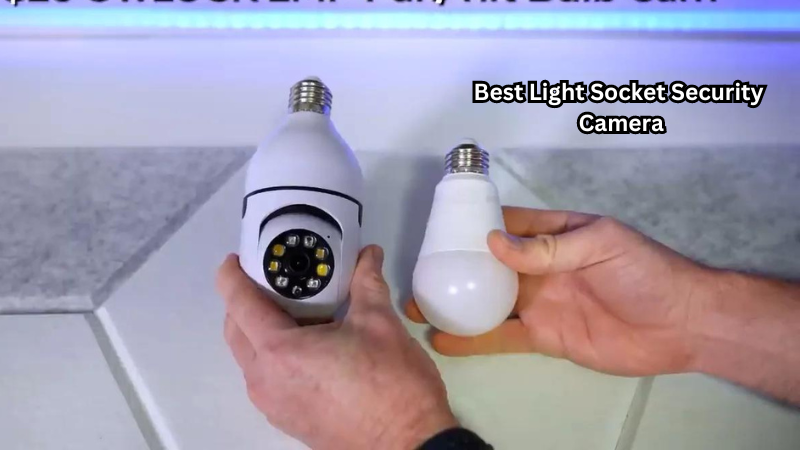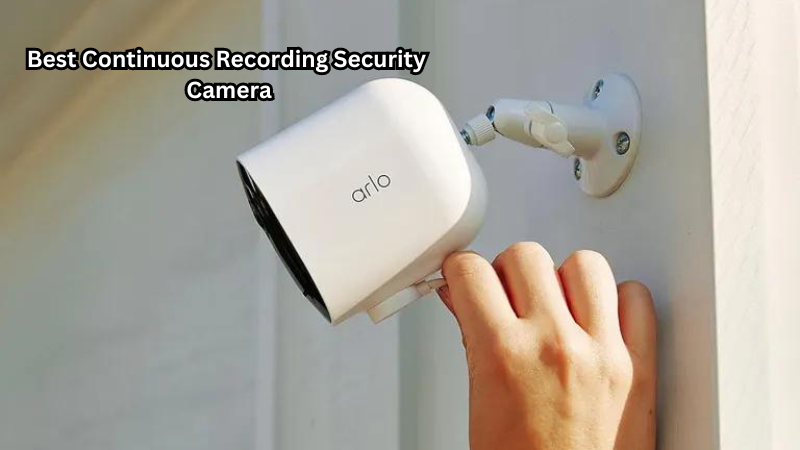Bank security cameras are notoriously poor in quality. They often produce grainy, low-resolution footage that fails to capture crucial details.
Despite technological advancements, many financial institutions continue to rely on outdated systems, compromising their ability to effectively deter and investigate crimes. The subpar quality of these cameras raises questions about the prioritization of security and the potential risks to customers and employees.
In this examination, we'll explore the reasons behind the poor quality of bank security cameras and the implications for the banking industry. We'll also discuss potential solutions to improve security and protect those who use banks.
The Advancement of Technology in Security
With the rapid advancements in technology, it's easy to assume that bank security cameras would have evolved accordingly. However, this is not always the case. While we now have access to high-definition cameras with advanced features like facial recognition and remote monitoring, many banks are still using outdated systems.
One of the main reasons for this is cost. Upgrading a bank's entire security system can be a significant investment, and many financial institutions may not see it as a top priority compared to other expenses. As a result, they continue to rely on older, cheaper camera models that provide subpar quality footage.
The Importance of Bank Security
The poor quality of bank security cameras is a cause for concern, especially considering the importance of proper security measures in financial institutions. Banks hold large quantities of cash and sensitive customer information, making them attractive targets for criminals.
In addition to deterring crimes, high-quality security cameras also play a crucial role in identifying suspects and providing evidence for investigations. Grainy footage with limited details can hinder law enforcement's efforts to apprehend perpetrators and bring justice to victims.
Types of Bank Security Cameras
When it comes to surveillance cameras for bank security, there are several types available:
- Fixed: These cameras are stationary and provide a fixed view of a specific area.
- Pan-tilt-zoom (PTZ): PTZ cameras can rotate and zoom in on different areas, providing more comprehensive coverage.
- Dome: These cameras are often used indoors and have a wide-angle view of the surrounding area.
No matter the type of camera, it's crucial to ensure they have sufficient resolution and coverage to capture clear footage that can be used for identification.
Reasons Why Are Bank Security Cameras So Bad
Now that we understand the types of cameras used in bank security, let's explore some reasons why they may produce poor quality footage:
Insufficient Lighting
Lighting plays a significant role in the quality of camera footage. The low light levels found inside banks can make it challenging for cameras to capture clear images, resulting in grainy and distorted footage.
To overcome this issue, banks may need to invest in additional lighting solutions or upgrade their current ones. This can significantly improve the clarity of footage and aid in investigations.
Lack of Maintenance
Like any other technology, security cameras require regular maintenance to function optimally. However, due to cost constraints or a lack of prioritization, many banks may neglect this aspect, resulting in dirty or out-of-focus cameras. Without proper upkeep, even the most advanced camera models will produce poor-quality footage.
Placement and Coverage
Another crucial factor that can affect the quality of bank security camera footage is its placement and coverage. If cameras are not strategically placed or do not have sufficient coverage, they may miss critical details or fail to capture essential areas.
Additionally, outdated systems with older technology may struggle to keep up with today's surveillance system needs.
Privacy Concerns
Some banks may also be limited in their use of security cameras due to privacy concerns. While it's essential to protect customers and employees, concerns about violating their privacy may prevent banks from installing cameras in certain areas or using advanced features like facial recognition.
Limited Bandwidth and Storage Space
With advancements in technology, cameras are now capable of recording high-quality footage in high-definition. However, this comes at a cost – both in terms of bandwidth and storage capacity.
Many banks may not have the necessary resources to handle large amounts of data from their security cameras, leading to a compromise in image quality and resolution.
Human Error
Lastly, human error can also play a role in the poor quality of bank security cameras. This could include incorrect camera settings, improper installation, or inadequate training for those responsible for monitoring and maintaining the cameras.
Bank surveillance systems require regular monitoring and adjustments to ensure they are functioning correctly and capturing clear footage. Without proper oversight, cameras may not be able to operate at their full potential.
The Implications of Bad Bank Security Cameras
The consequences of having subpar security cameras in banks can be severe. Not only does it put customers and employees at risk, but it also undermines the public's trust in financial institutions' ability to protect their assets.
In the event of a crime, poor quality video may not provide enough evidence for law enforcement to identify and apprehend suspects, putting them back on the streets and potentially causing more harm. Video files that are not clear or easily accessible can also hinder investigations, leading to delays and increased costs. Additionally, outdated security systems may make banks more vulnerable to cyber attacks or other forms of breaches.
Solutions for Improving Bank Security
Now that we've explored the reasons for bad bank security cameras and their implications let's discuss potential solutions to improve security in financial institutions:
- Upgrade to IP Cameras: Switch to high-definition IP cameras with better resolution and wider coverage. Camera quality and storage capabilities have improved significantly in recent years, making them a more cost-effective option.
- Implement Smart Analytics: Utilize AI-powered analytics to detect suspicious behavior and alert security personnel.
- Enhance Lighting: Improve lighting in banks to ensure clear video feeds. Some digital cameras have low-light capabilities, making them a good alternative to traditional cameras.
- Regular Maintenance: Schedule regular maintenance and updates for security cameras.
- Network Infrastructure Upgrade: Upgrade network infrastructure to support high-definition video feeds.
- Integrate with Other Systems: Integrate security cameras with other security systems, such as access control and alarm systems.
- Train Security Personnel: Provide training for security personnel to effectively monitor and respond to security threats.
- Cybersecurity Measures: Implement robust cybersecurity measures to protect against cyber threats. A CCTV camera is only as secure as the network it's connected to.
- Collaboration with Law Enforcement: Establish close collaboration with law enforcement agencies to share intelligence and best practices. Security camera system integration that allows for the sharing of footage and data can aid in investigations.
By implementing these solutions, banks can significantly improve their security and better protect their customers, employees, and assets.
Do ATMs have Security Cameras?
Yes, most ATMs (Automated Teller Machines) are equipped with security CCTV cameras for surveillance purposes.
Video surveillance systems in ATMs serve multiple purposes, including monitoring transactions and detecting fraudulent activities. The placement and coverage of these cameras may vary depending on the ATM's location, but they are typically strategically placed to capture clear footage of anyone using the machine.
Security camera lenses on ATMs may also have a wider angle to capture the surrounding area and provide additional security.
The footage from these cameras can be used for identification or as evidence in criminal investigations. Security camera systems are just one aspect of ATM security, as these machines also have several other physical and digital security measures in place to protect against theft and fraud.
FAQs
What are the arguments against surveillance cameras?
Some common arguments against surveillance cameras include concerns about violating privacy, potential misuse of footage, and the cost and maintenance required for these systems. So, while surveillance cameras can provide security and evidence, they also raise ethical and practical concerns.
Why is CCTV not useful?
CCTV (Closed-Circuit Television) may not be useful in certain situations, such as when the cameras are outdated or poorly maintained, leading to poor quality footage. Additionally, CCTV may not be effective if they are not monitored regularly or integrated with other security systems.
What type of cameras do banks use?
Banks typically use a combination of different types of cameras, including fixed and pan-tilt-zoom (PTZ) cameras. Fixed cameras are stationary and capture footage from a specific angle and location, while PTZ cameras can move and zoom to cover a larger area. Banks may also use IP cameras.
How many days is ATM CCTV footage kept?
The length of time that ATM CCTV footage is kept may vary depending on the bank's policies and regulations. In some cases, footage may only be stored for a few days or weeks, while others may keep it for several months or even years.
Conclusion
In conclusion, the effectiveness of bank security cameras is pivotal in maintaining a secure environment within financial institutions. Addressing the challenges that contribute to the perception of "bad" security cameras, such as outdated technology and poor maintenance, is essential for enhancing overall security measures.
By investing in modern camera systems, ensuring proper maintenance protocols, optimizing camera placement, enhancing lighting conditions, and expanding coverage areas, banks can significantly improve their surveillance capabilities.
Ultimately, these improvements play a crucial role in deterring criminal activities, safeguarding assets, and fostering a safer banking environment for customers and staff alike.
